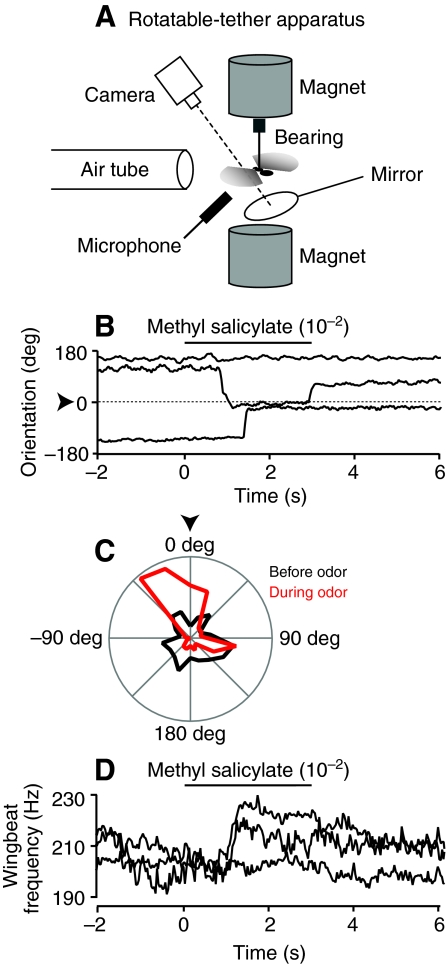Fig. 5.
Odors can evoke a turning response in flight. (A) Schematic of the rotatable-tether apparatus. The fly is tethered to a pin which is suspended between two magnets. The pin rests on a jewel bearing, allowing the fly to rotate freely in the x–y plane. A camera records the image of the fly, and the x–y orientation is extracted from this image. A microphone records the sound of the fly's wingbeats, and this audio signal is used to compute WBF. (B) Three representative trials showing how the fly's heading direction can change over time in response to odor. Upwind direction corresponds to 0 deg. (C) Polar histogram of the heading direction of the fly in the 3 s prior to odor (black) and the 3 s during odor stimulation (red). Data for the histogram was accumulated over 30 trials from five flies. Upwind direction is 0 deg (arrowhead). (D) Odor also evoked an increase in WBF in the trials shown in B. The strain is wild.

